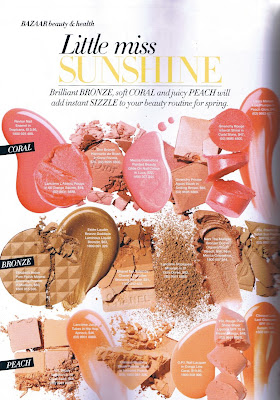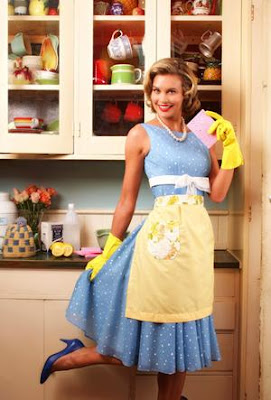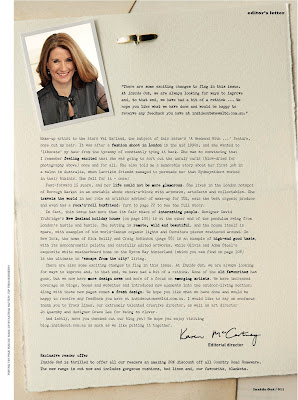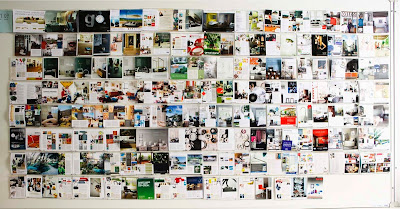 When I lamented last week that Vogue Australia had
When I lamented last week that Vogue Australia had  missed a great opportunity to promote local talent by commissioning a UK-based illustrator to produce its September anniversary issue covers, Megan Hess is one name I had in mind.
missed a great opportunity to promote local talent by commissioning a UK-based illustrator to produce its September anniversary issue covers, Megan Hess is one name I had in mind. Melbourne-based Hess has an unmistakably sophisticated, cosmopolitan and
Vogue-esque sensibility – her inspirations include fashion, art, travel, Hepburn, vintage finds and film noir – with the illustrious international career to match (her commissions range from Chanel to
TIME).
In fact, the majority of her regular clientele are based in New York. So, it's no coincidence that
Sex and the City creator Candace Bushnell called upon Hess to create the cover for
One Fifth Avenue: she
is the Carrie Bradshaw (or, keeping it local, the Yasmin Sewell) of illustration. A truly inspiring 'Girl In Media', here's what she has to say about art, the glossies and her fairytale (and 'Femme Fatale') career...
FROM ART DIRECTOR TO ONE FIFTH AVENUE"I got a call in the middle of the night from Candace Bushnell’s publisher asking if I would illustrate her next novel..."
Can you tell us how your passion for illustration and  design evolved? What activities did you enjoy as a little girl?
design evolved? What activities did you enjoy as a little girl? I always loved drawing and it was that one thing that I was good at. From the time I was about 10 years old, I went to art classes every Saturday and I looked forward to it all week.
Where did you study after school? I studied Graphic Design at Griffith University because it felt like the closest thing to a ‘real job’ in the art world. It was never quite the right career for me but it lead me to finally being an artist, so I’m very grateful that I did that now.
How did you get your career started? After working as an art director in various ad agencies for several years, I packed everything up and moved to London where I worked in a million different creative jobs. It was in my final job in London, working as the art director for Liberty department store, that I realized that I had a burning desire to be an artist.
The budgets [at Liberty] were huge and the creative people that I worked with still give me goose bumps. We had billboards with model Erin O’Connor dancing with elephants; it was just amazing. While I loved art directing fashion, I loved illustrating it more. I started to do very small illustrations for Liberty and from this little commissions began to follow.

After about a year, I found myself with non-stop work. I wasn’t earning a fortune, but I’d never been happier and I knew regardless of finances I was going to do this forever. As my clients got bigger and better, I was able to be a little more selective and just work on briefs that I knew had a great creative opportunity.
Then, in 2006, I got a call in the middle of the night from Candace Bushnell’s publisher asking if I would illustrate her next novel
One Fifth Avenue. After that, things took off at rapid speed! Her book became a
New York Times best seller and I meet with Candace and she asked me to illustrate all her previous books including the cover of
Sex and The City. Once
Sex and the City was released, I was contacted by TIME magazine in New York to create portraits for them. This was a dream come true; I still can’t believe I work for them!

Following this, I was invited by Bloomingdales to create a new look for the store. This involved illustrating everything from new fashion collections by designers such as Marc Jacobs and Chanel, to window display and full page brand illustrations in
The New York Times. They are still my biggest client. Right now I'm working on their next fashion campaign.
What was your first illustration commission for a magazine? It was a ¼-page illustration for
ELLE UK . I was living in London and working at Liberty at the time. I remember racing to the newsagent to see if it had come out. I probably bought 100 copies!
Who have been some of your mentors/inspirations? Erte. I think he was, and still is, the greatest illustrator of all time.
A DAY IN THE FREELANCE LIFE"I’ll bring my little digital camera with me in case I see something interesting."
What does a typical day involve for you? I work from

home in my studio. So it’s breakfast, then I check all deadlines to make sure I’m on track. I always try to leave lots of time for the initial concept stage, because you never want to rush that bit. Once an image is working, it comes together very quickly, but if I’m not happy with something I could re-draw it a hundred times.
When you're lacking inspiration, what do you do? Get out of the studio. I usually try to not think of the brief and instead just go for a walk or look at unrelated things. Give my thoughts some space.
Do you keep a journal/sketch pad with you at all times? I should but often don’t have one on me when I have an idea. If I’m really looking for inspiration, I’ll bring my little digital camera with me in case I see something interesting. I usually have a little pile of things that have inspired me that week. It could include a postcard, an old photograph, fabric, anything really.
CREATIVE PERSUASIONS..."Every month I buy Vanity Fair, US Vogue and Italian Vogue."
You launched a beauty brand, Femme Fatale, with your  sister Kerrie, which is how I first came to know of you. Can you tell us about that experience?
sister Kerrie, which is how I first came to know of you. Can you tell us about that experience? About eight years ago, Kerrie and I decided to create a little range of bath and body products which we called ‘Femme Fatale’. Initially we sold our range in Henri Bendel exclusively, and it was very small and boutique. Then it took off in a big way. We were featured in
Vanity Fair and, before we knew it, we had stores from here to Tuscany wanting to stock our range.
While we loved creating the products, the business just got too big and we hadn’t spent a single day doing anything creative for a long time. So we decided to still continue doing what we loved (the creative bit) and get someone to handle all the other bits. Right now we’re in development to create some lovely new things, but we’re taking
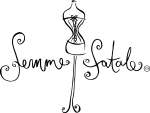
our time with it.
Outside of design/illustration, what are your interests? I love to travel and watch films. I also have a huge interest in architecture and interior design. I’ll often flip through an architecture book just before bed.
Which magazines do you read? Every month I buy
Vanity Fair, US
Vogue and Italian
Vogue. And then it just depends what I’m working on, or which mags look good that month. I might buy an interior mag or
Conde Nast Traveler. Last week I was working on some menswear illustrations for Bloomingdales, so I bought every men’s fashion mag that looked interesting. Other months I might be illustrating bridal images, so I’ll buy some bridal mags. It changes every month..
Which blogs/websites do you frequent?GWAS: I find this website incredibly helpful to what I do. I’m so glad you started your site.
Mamamia: I love that Mia brings a sense of humor to things funny, sad and everything in between. She is one of my favorite writers.
The Sartorialist: Great for style inspiration
WWD: I love the fashion market news.
Style.com: Great runway coverage
TheNewYorkTimes.com: Because most of my work is in New York, I like to keep up with what’s happening when I’m not here.
Net-a-porter.com: This is my favourite distraction!
ILLUSTRATION & DESIGN IN THE GLOSSIES "As magazines search for more of a point of difference I think they will use more illustration."
Can you give us an idea of illustration  trends in the mag industry?
trends in the mag industry? The first magazines ever created only used illustration, but today the amount of illustration used is relatively small. I think there’s so much more room for illustrations in mags today, and I feel a rush of joy when I see anyone’s illustration in a magazine. We’ll always be secondary to photography and, like most people, I too love beautiful fashion photography. But as magazines search for more of a point of difference I think they will use more illustration.
Are there some key titles who use illustration really well? The indie mags definitely do use more illustrations; and they do it well. I illustrate for
Fashion Trend magazine here, and it’s one my favorite clients because they me give a full page to draw one beautiful runway image from the latest collections. I’ll often do a few pages like this for them each month, and it’s such a joy to do because the image just speaks for itself. Many international fashion magazines also do much more Illustration than most Australian titles. I was recently flipping through
FLAIR magazine and they had about 20 fashion pages all illustrated. It’s not unusual to see this in high-end European fashion titles.
How do you think illustration complements a magazine's aesthetic offering? I think it can break the visual monotony. It can also capture something that sometimes photography just can’t. Illustration can make a magazine unique and refreshing. A great illustration can stop you in your tracks.
Who are some of the stand-out/popular  illustrators in the industry now, and where can we see their work?
illustrators in the industry now, and where can we see their work? Many of my favorite illustrators are on
artdepartment.com. My favourite of all time, though, is Erte. What I love about him is that he completely ignored all fashion trends and created his own world of fashion images. Most of his work was quite simple, in black and white, but every image created drama and a sense of escapism. He will be forever my biggest inspiration.
And I've no doubt Megan will inspire many aspiring young illustrators herself!Yours truly,
Girl With a Satchel
 Where's the I.T. guy when you need him? That's a question I often find myself asking when Mia Freedman and I get a chance to chat about blogging issues... of which, there are many, like how I spent half my day working out how to use iMovie and upload a clip to YouTube (hope it's worth it for you, guys!).
Where's the I.T. guy when you need him? That's a question I often find myself asking when Mia Freedman and I get a chance to chat about blogging issues... of which, there are many, like how I spent half my day working out how to use iMovie and upload a clip to YouTube (hope it's worth it for you, guys!). 













